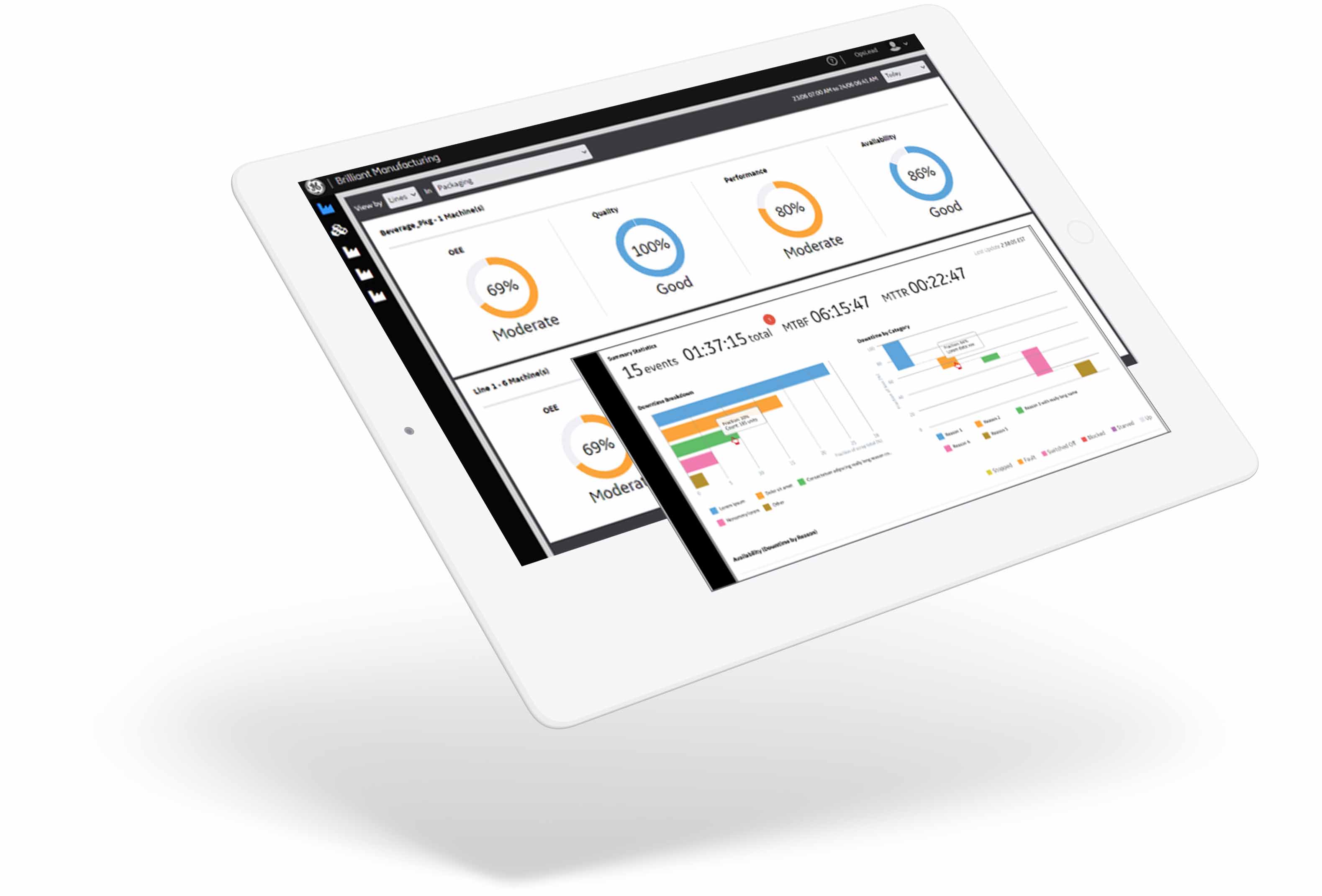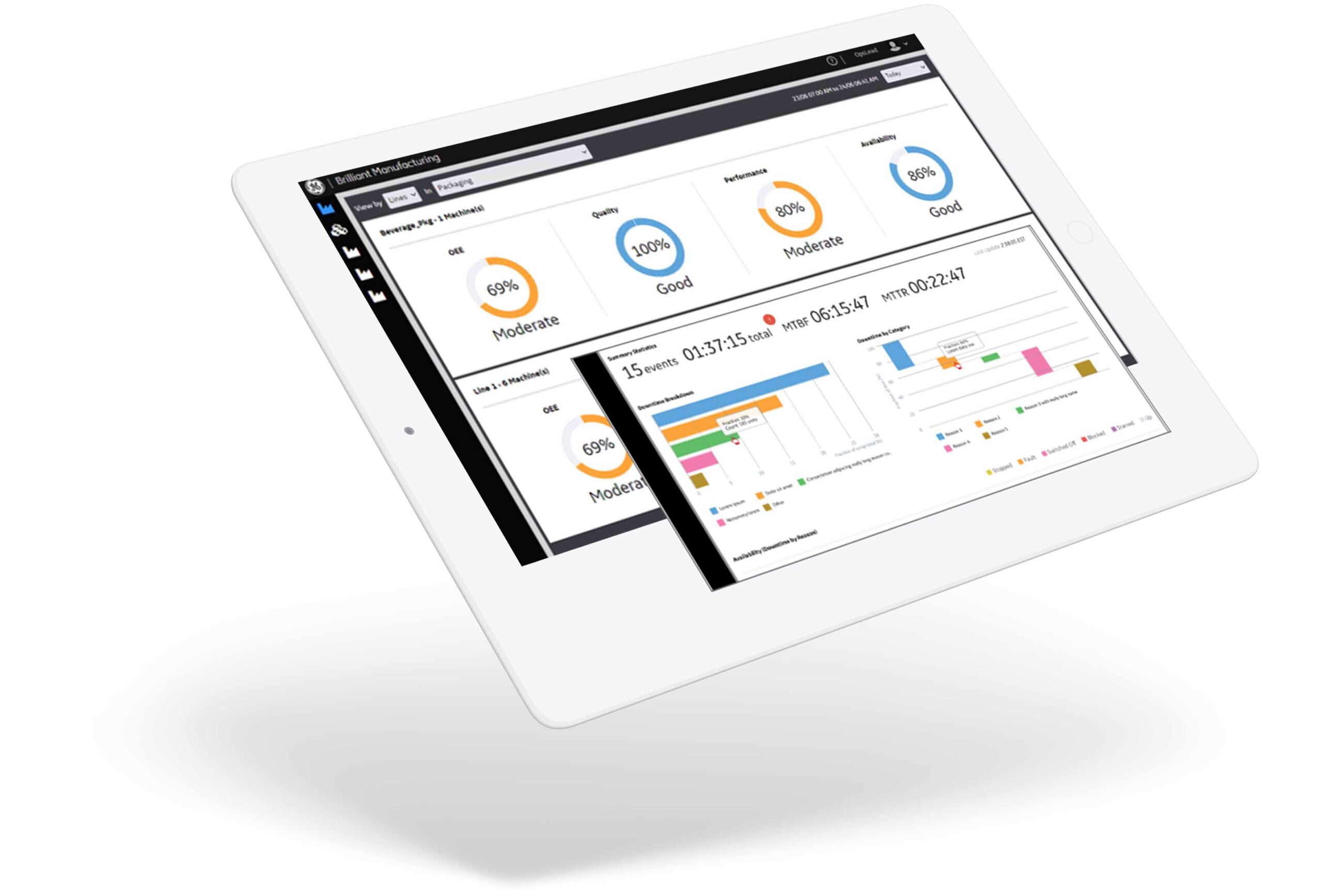
The Food & Beverage (F&B) and CPG manufacturing industry is complicated. Consumers expect product variety; an on-demand economy requires more flexibility; margins for error are thinner. You know there’s always room for improvement, but competing priorities make it difficult to decide what needs your attention first. By taking a modular approach, you don’t have to tackle everything at once.
For anyone on the road to digital transformation, GE Digital’s top recommendation is to start where you are instead of not starting at all. It may not be possible for your organization to take on several new processes at once. Instead, make a plan to introduce modular digital solutions that will work together to make your operations more efficient. Starting the journey to integrated digitalization is what matters most for your company’s long-term success.
Digital Transformation Strategy
A sustainable approach to digital step change
The first step in sustainable step change is to identify what your company’s current approaches are to industry challenges. Knowing your manufacturing maturity level will help you discover the opportunities that deliver the highest ROI for where your business is at this moment in time.
By taking a modular approach to digital step change, you won’t overwhelm your existing infrastructure or create chaos among team members. You’ll embark on your digital maturity journey at a speed that suits your organization. This gradual approach is more financially feasible and lets decision-makers see how the new systems are improving your operation. The more stakeholders you have on your side, the faster your company’s digital innovation will scale, leading to even greater manufacturing maturity.
Digital Transformation Maturity Model
The six levels of Manufacturing Maturity
The levels are, in ascending order:
- Automation and Controls – Automating manual processes, machines & equipment – and connecting systems – to better operate and visualize production
- Plant/Site Execution – Using executional systems and real-time production data to help maximize overall equipment effectiveness (OEE), improve production scheduling and ensure product quality
- Enterprise Visibility – Having a centralized data repository that combines multiple data sources to allow comprehensive, enterprise-wide visibility of production health
- Advanced Analytics/Predictability – Applying advanced analytics solutions to increase production accuracy, efficiency, and consistency
- Prescription/Optimization – Applying AI/machine-learning and Digital Twin solutions to recommend asset and process adjustments that optimize production
- Autonomous Adaptability – Using Industrial AI and neural network models that dynamically and autonomously adjust systems and processes to optimize production
If you’re at the Plant/Site Execution phase, it is unrealistic to ask your manufacturing operation to jump directly to Autonomous Adaptability. Instead, focus your efforts on rising to Enterprise Visibility. Using these levels as a roadmap, your organization has guidance for growing into digital maturity in both the short and long term. GE Digital can help you achieve this step change with innovative, modular, manufacturing technologies that integrate and communicate with your existing systems.

Manufacturing Execution Systems (MES) software can help maximize OEE and improve production scheduling.
Digital Transformation Example
Working up the ladder of digital step change: a Procter & Gamble case study
This approach to modular innovation has benefited GE Digital partners across the F&B and CPG industry. For example, P&G has collaborated with GE Digital in a co-innovation partnership to develop their digital maturity model and drive digital step change at its factories worldwide that range in age, maturity, and line configurations.
Production plants started with basic functionality from GE Digital’s Proficy suite. This functionality allows sites to take control of stoppages and downtime, material scrap rates and quality. Plants that have progressed in their digital maturity journey then adopt greater functionality, using as much automation as possible and expanding their manufacturing execution system (MES) implementation. This allows users to operate with fewer manual touches and increase their efficiency by spending more time on value-adding activities.
In the past few years, P&G has taken their next step up the digital transformation maturity curve by adopting GE Digital’s Proficy Manufacturing Data Cloud. This solution takes manufacturing data—past and present—contextualizes it,and stores it in the corporate data lake for more efficient archiving, reporting and analytics. Benefits include a reduction in infrastructure cost and a significant performance boost because there is less data for applications to work through. P&G specialists are now using the centralized data and machine learning capabilities to perform even more advanced predictive analytics across their plants and to identify how to deliver even higher production performance.
Manufacturing Maturity Quiz
Now that you have seen how digital innovation improves operations with each successive level, you can think about the next step your company should take on its digital transformation journey.
Take our online self-assessment quiz to reveal the digital maturity level of your manufacturing operations. This six-question quiz will reveal the state of your production processes and send you detailed recommendations. Use the results as a roadmap to plot the next steps in your journey towards digital transformation and innovation.
Matt Wells, Vice President, Product Management, GE Digital
